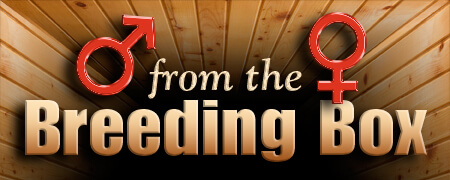A question has been submitted by a fellow beef producer in an effort to more fully understand the genetic potential resulting from the use of science based, objective information in a breeding program.
QUESTION: I read and heard that carcass traits do not affect reproduction but that yearling growth does. I am also unaware of what maternal traits restrict fertility. Can you help me understand these relationships?
ANSWER: The answers to your questions about the relationships between growth traits and reproduction or maternal traits and reproduction are essentially the same. The answers depend on having a clear understanding of the difference between a genetic correlation between traits versus a phenotypic (simple) correlation between traits.
A significant genetic correlation exists when two traits (ex: birth weight and yearling weight) are controlled by some of the same genes. When you select for one trait (low birth weight), the tendency will be for the other trait (yearling weight) to change even though you did not select for it. In contrast, a simple correlation (two traits changing together) can be due to a non-genetic cause. A good example is weaning weight and back fat thickness in calves--when calves are creep fed they have heavier weaning weights and more back fat at weaning, but the two traits are not necessarily controlled by the same genes. Instead, an environmental factor (extra feed) influenced both simultaneously, so they change together (a simple correlation due to a non-genetic factor).
In general, reproductive traits (pregnancy rate, calving interval, etc.) do not have a significant GENETIC correlation with growth or maternal traits. They are not controlled by the same genes. However, reproductive performance is very heavily influenced by body weight and body condition score. Therefore, there can be a PHENOTYPIC correlation between yearling weight and age at puberty or milk production level and pregnancy rate in first calf heifers. This is especially true when animals have inadequate feed, thereby reducing body weight and body condition score.
The application of this knowledge is demonstrated when cows selected for high milk production may have poor reproductive performance if the feed is restricted due to environmental effects or management decisions (e.g., low rainfall, overstocking, underfeeding to save dollars, etc.). Likewise, if cows in the breeding herd become too big, their maintenance requirements may not be met by the available forage and their reproductive efficiency will suffer.
The key in making wise decisions on growth and maternal traits is to match the size of the animals and their milk production level with the environment (feed resources, supplemental feed costs, etc.). In doing so, the selection for growth and maternal traits will not cause a decrease in reproductive efficiency.
A "real world" example is the recommendation I would make to an Angus breeder producing bulls for commercial bull customers in Wadley, GA versus Lubbock, TX. Lubbock gets 16" of rainfall in a "normal" year (Texans claim they have never seen that much annual rainfall) and Wadley receives 51" of rain annually. Obviously, you can grow a lot more forage per acre in Wadley and are much less likely to suffer a drought. Therefore, the Angus breeder intending to sell bulls to commercial cattlemen in Wadley can select for higher milk production, knowing that the forage production should be adequate to support high milk production while maintaining the body condition of the cows in a commercial herd. The breeder can sell commercial bulls to ranchers in Wadley with rather high milk EPDs and not be as concerned about having a negative impact on the reproductive efficiency of the customer's herd. On the other hand, an Angus breeder selling bulls to a commercial producer in Lubbock would need to place more negative selection pressure on milk. With restricted forage availability, commercial producers in Texas need to purchase bulls with moderate to low in milk EPDs for fear of creating commercial cows that produce too much milk, have difficulty maintaining their body condition and fail to rebreed.
Hopefully, this explanation and this example clarifies the relationships that exists between reproduction and growth or maternal traits.
